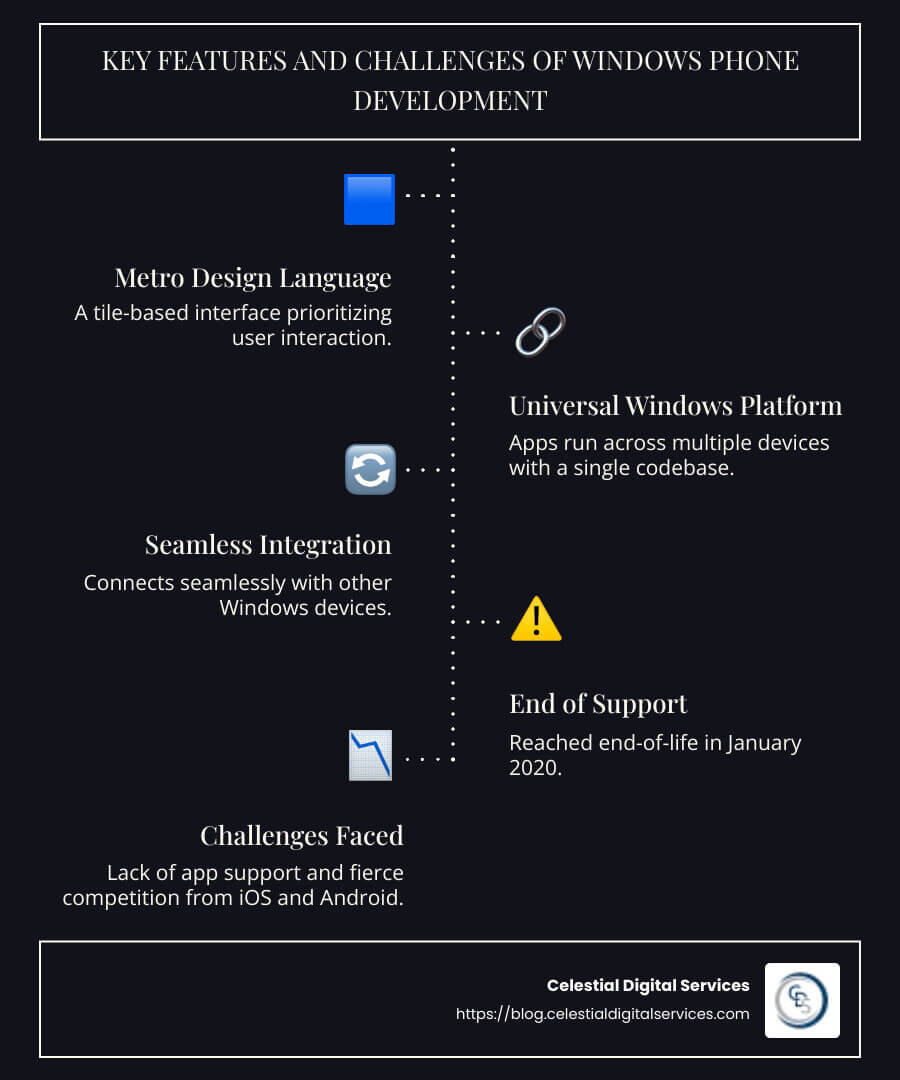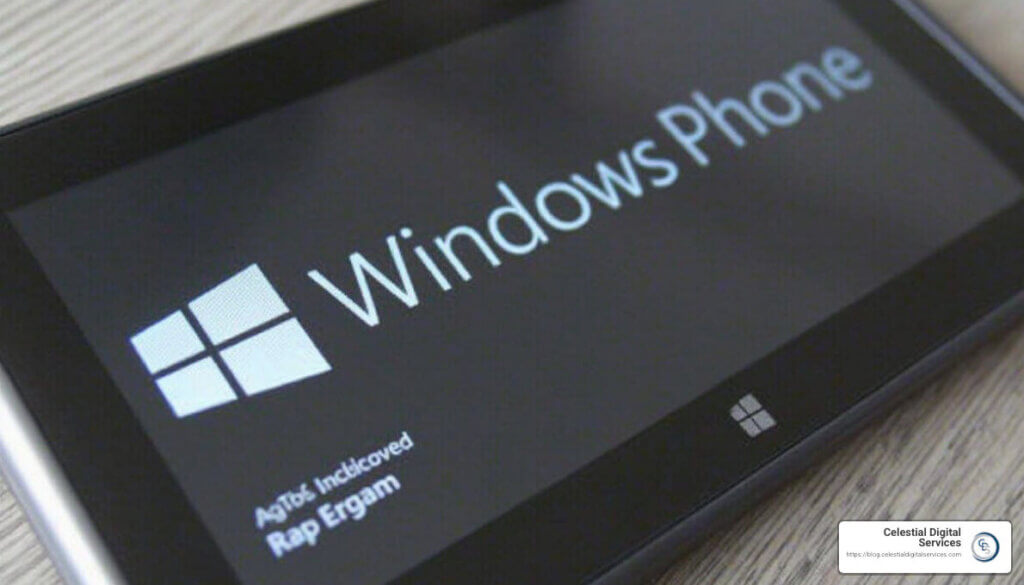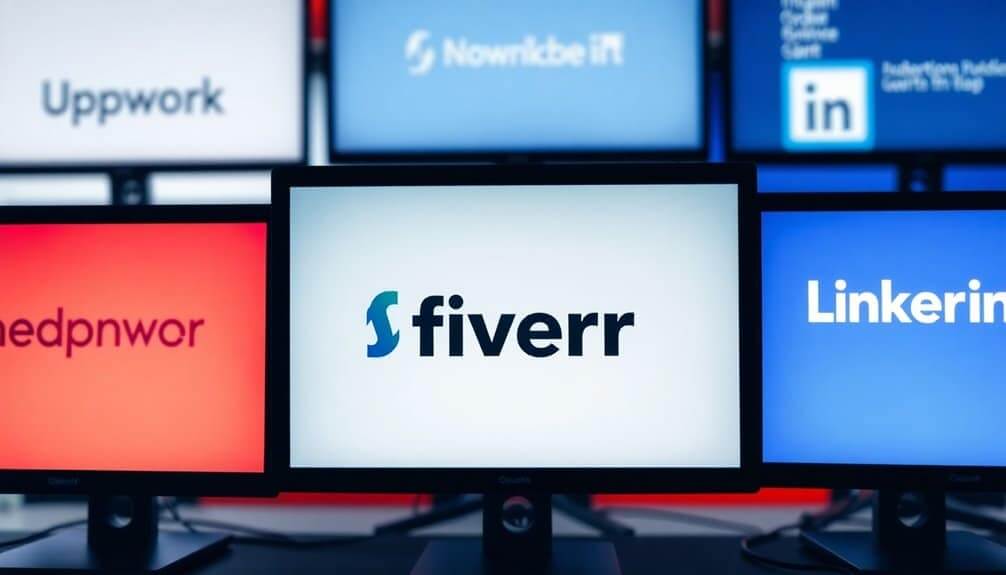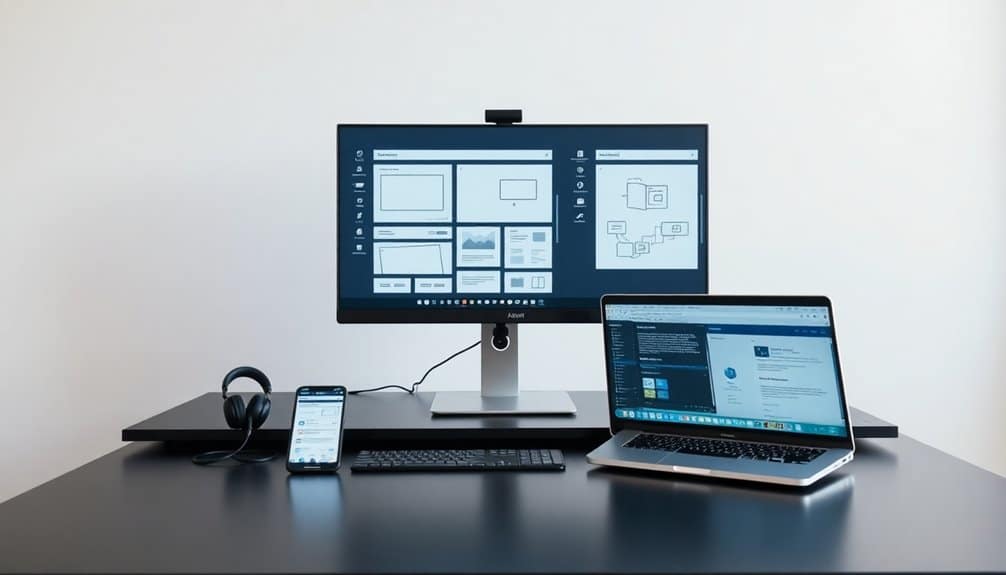Windows phone development represents a unique chapter in the evolution of mobile technology. Launched by Microsoft in 2010, Windows Phone aimed to establish itself in a market largely dominated by iOS and Android. Central to this initiative was the Metro design language, celebrated for its vibrant tiles and user-friendly interface. This design approach, emphasizing minimalism and dynamic elements, has left a lasting impact on the tech industry.
Key components of windows phone development include:
- Metro Design Language: A streamlined, tile-based interface that emphasized content and user engagement.
- Universal Windows Platform (UWP): Enabled the creation of apps that could operate across various devices with a single codebase.
- Integration: Offered seamless connectivity with other Windows devices, featuring capabilities like notification syncing and Office Mobile apps.
- End of Support: Officially reached end-of-life in January 2020, following the cessation of active development in 2017.
Despite facing challenges such as intense competition and a limited app ecosystem, Microsoft’s Windows Phone initiative spurred innovations that continue to influence today’s mobile applications.
With extensive expertise in digital marketing and technology solutions, insights into windows phone development are shared, drawing on years of experience in fostering growth for small businesses through innovative strategies. In the following sections, we will explore the rise and fall of Windows Phone, the lessons learned by developers, and the future of mobile app development.

Must-know windows phone development terms:
– best android phone for development
– mobile phone application development
– making apps for android
The Rise and Fall of Windows Phone
Microsoft’s journey into the mobile world began with high hopes and ambitions. In 2010, it launched Windows Phone 7, a bold move to challenge the reigning giants, iOS and Android. At the core of this venture was the Metro design language, which introduced a fresh, tile-based interface that emphasized simplicity and user engagement. Despite its innovative approach, Windows Phone faced significant problems that led to its eventual decline.
Windows Phone 7: A Bold Start
Windows Phone 7 was Microsoft’s attempt to redefine mobile interfaces. The Metro design language was a standout feature, characterized by its vibrant tiles and fluid animations. This design was both a strength and a weakness. While it offered a unique aesthetic, it also deviated significantly from the icons and layouts users were accustomed to on other platforms.
Unfortunately, the innovative design was not enough to capture a substantial market share. Early Windows Phone development struggled with several critical issues:
- Ergonomics: The interface was not optimized for touch interactions, leading to a clumsy user experience.
- Limited App Ecosystem: At launch, Windows Phone 7’s app store lacked essential apps like Instagram and Google Maps, which were readily available on competing platforms.
Metro Design Issues
The Metro design, while visually appealing, faced criticism for its practicality. The tightly packed tiles, although meant to streamline navigation, often resulted in text cut-off and a cluttered appearance. This design choice, intended to unify the experience across Windows devices, did not translate well to the smaller screens of mobile phones.
Moreover, the decision to prioritize a consistent design over functionality led to limitations in user customization and flexibility, which were becoming increasingly important to smartphone users.
Lack of Apps: A Critical Shortcoming
One of the most significant challenges for Windows Phone was the lack of app support. Despite Microsoft’s efforts to attract developers, the app ecosystem remained sparse. This deficiency was a major deterrent for potential users, as they could not access the popular apps they were accustomed to on other platforms.

The absence of key apps and limited developer interest were pivotal in the platform’s inability to compete with iOS and Android. Reports indicated that by 2012, Windows Phone held only a 3% market share, despite initial optimism. Developers were hesitant to invest in a platform with a small user base and lower ad revenue potential compared to its competitors.
Conclusion
The rise and fall of Windows Phone highlight the complexities of entering a competitive market. While Microsoft’s vision was innovative, the execution faced impossible challenges. The lack of a robust app ecosystem and the missteps in design ultimately led to the platform’s decline. However, the lessons learned from this venture have informed subsequent developments in mobile technology, influencing design and integration strategies across the industry.
Windows Phone Development: Challenges and Opportunities
Windows Phone development offered a unique set of challenges and opportunities for developers. While Microsoft aimed to create a robust ecosystem, several factors influenced the platform’s trajectory.
Developer Support and App Ecosystem
One of the most significant problems was attracting developer support. Microsoft provided tools like the Windows Phone SDK and Visual Studio to facilitate app creation. Despite these efforts, the platform struggled to build a vibrant app ecosystem. Developers were wary of investing time and resources into a platform with limited market share. By 2012, the Windows Phone Store had only about 75,000 apps, a stark contrast to the hundreds of thousands available on iOS and Android.

The lack of essential apps, such as Instagram and Google Maps, further deterred users from adopting Windows Phone. This scarcity of apps was a vicious cycle: fewer users led to less developer interest, which in turn resulted in fewer apps.
Windows Phone SDK and Visual Studio
Microsoft’s development tools, particularly the Windows Phone SDK and Visual Studio, were designed to streamline app creation. Visual Studio provided an integrated development environment (IDE) with features for writing, testing, and debugging code. It supported both native and managed code, allowing developers to leverage existing C# and .NET skills.
Expression Blend complemented Visual Studio by offering a design-centric tool for creating user interfaces. It allowed developers to craft visually appealing apps with fluid animations, aligning with the Metro design language. However, despite these robust tools, the limited user base and app revenue potential were significant deterrents.
Opportunities for Innovation
Despite the challenges, Windows Phone presented opportunities for innovation. The platform’s integration with the Windows ecosystem allowed developers to create apps that seamlessly interacted with Windows PCs. Features like Live Tiles provided real-time updates directly on the home screen, offering a unique user experience.
Furthermore, Microsoft’s support for native C and C++ libraries enabled developers to port traditional Windows desktop programs to Windows Phone with relative ease. This capability opened doors for bringing established software to the mobile space.
Conclusion
Windows Phone development was a complex endeavor, marked by both challenges and opportunities. While Microsoft offered advanced tools and a unique design language, the platform’s limited market share and app ecosystem hindered its success. The next section will dig into the lessons learned from Windows Phone development, focusing on user interface design, app availability, and integration with the Windows ecosystem.
Lessons Learned from Windows Phone Development
User Interface Design
One of the standout features of Windows Phone was its Metro design language, a bold and clean aesthetic that prioritized simplicity and clarity. The design was inspired by the Zune HD and later influenced Windows 8’s live tiles. These Live Tiles weren’t just static icons; they updated in real-time, providing users with dynamic information at a glance.
However, while visually appealing, this design approach had its challenges. Developers needed to adhere to strict design guidelines, which sometimes limited creativity. Yet, for users, this consistency meant an intuitive and cohesive experience across apps.
App Availability
A major hurdle for Windows Phone was its app availability. Despite efforts to grow, the platform’s app ecosystem lagged behind competitors. By the end of 2012, the Windows Phone Store had only about 75,000 apps. This was a fraction compared to what iOS and Android offered. Essential apps like Instagram and Google Maps were missing, which deterred potential users. This lack of apps created a vicious cycle: fewer apps led to fewer users, which in turn discouraged developers from investing in the platform.
Integration with Windows Ecosystem
Windows Phone’s integration with the broader Windows ecosystem was a significant advantage. Using the Universal Windows Platform (UWP), developers could create apps that worked seamlessly across Windows 10 devices. This meant a consistent experience whether users were on a phone, tablet, or PC.
Moreover, features like notification syncing allowed users to receive alerts across their devices, enhancing the overall user experience. However, despite these integrations, the platform struggled to gain a foothold in the mobile market.
Isolated Storage
Windows Phone introduced Isolated Storage, a feature that allowed apps to store data securely on the device. This was crucial for maintaining user privacy and data integrity. Developers could store settings, files, and other data without requiring cloud services, which was particularly beneficial in areas with limited internet connectivity.
However, while Isolated Storage was a useful feature, it wasn’t enough to sway developers who were already invested in the more popular ecosystems of iOS and Android.
As we reflect on the journey of Windows Phone development, it’s clear that while the platform had its strengths, it also faced significant challenges. The next section will address common questions about the development and eventual cancellation of Windows Phone.
Frequently Asked Questions about Windows Phone Development
Who is the developer of Windows Phone?
Windows Phone was developed by Microsoft Mobile. It was introduced as a successor to Windows Mobile and aimed to capture the consumer market with a fresh approach. The operating system was notable for its Metro design language, which offered a unique, tile-based interface that set it apart from other mobile platforms at the time.
Why was Windows Phone cancelled?
The cancellation of Windows Phone was primarily due to a lack of developer support and fierce competition from Android and iOS. Despite Microsoft’s efforts, the platform struggled to attract and retain app developers. By the end of 2012, the Windows Phone Store had only around 75,000 apps, a small number compared to the vast libraries available on competing platforms. Essential apps were missing, which discouraged both users and developers from investing in the ecosystem.
Additionally, the rapid evolution of Android and iOS, backed by their vast user bases and developer communities, made it challenging for Windows Phone to compete. Microsoft’s attempts to boost the platform, including partnerships with Nokia, could not overcome these problems. As a result, Microsoft shifted its focus to integrating its services with the dominant mobile operating systems, Android and iOS.

Is Windows Phone OS still supported?
Windows Phone OS has reached its end-of-life status. Microsoft ceased active development of the platform in 2017. While the company initially continued to provide security updates and support for existing devices, these efforts have since dwindled. As of now, Windows Phone OS is no longer supported, and users are encouraged to transition to other platforms for continued software updates and security improvements.
This shift marked the end of an era for Microsoft’s mobile ambitions, but it also paved the way for the company to focus on software development and integrations with other mobile operating systems, ensuring a seamless experience for users across different devices.
Conclusion
The story of Windows Phone is a tale of missed opportunities and lessons learned. Despite its innovative Metro design and potential to integrate seamlessly with the Windows ecosystem, the platform struggled to gain traction. The lack of developer support and a robust app ecosystem were significant problems. By the time Microsoft realized the importance of a thriving app store, Android and iOS had already dominated the market.
Yet, this chapter in mobile history isn’t just about what could have been. It’s a reminder of the changing nature of technology and the importance of adaptability. As we look ahead, we see that the future of mobile development lies in flexibility and integration. Microsoft’s pivot to focus on developing apps for iOS and Android demonstrates a keen understanding of this landscape shift. By embracing cross-platform development, companies can ensure their products meet users where they are, regardless of the device they use.
At Celestial Digital Services, we understand the importance of staying ahead in this environment. Our mission is to empower startups and local businesses with innovative digital solutions. We offer a comprehensive range of services, including mobile app development, to help businesses thrive in the competitive online landscape.
The lessons learned from Windows Phone’s journey underscore the need for robust app ecosystems and seamless user experiences. As we continue to innovate and adapt, we remain committed to providing our clients with the tools and support they need to succeed in the digital age. Whether it’s enhancing user engagement, streamlining operations, or exploring new growth avenues, we’re here to help build a future where technology works for everyone.



